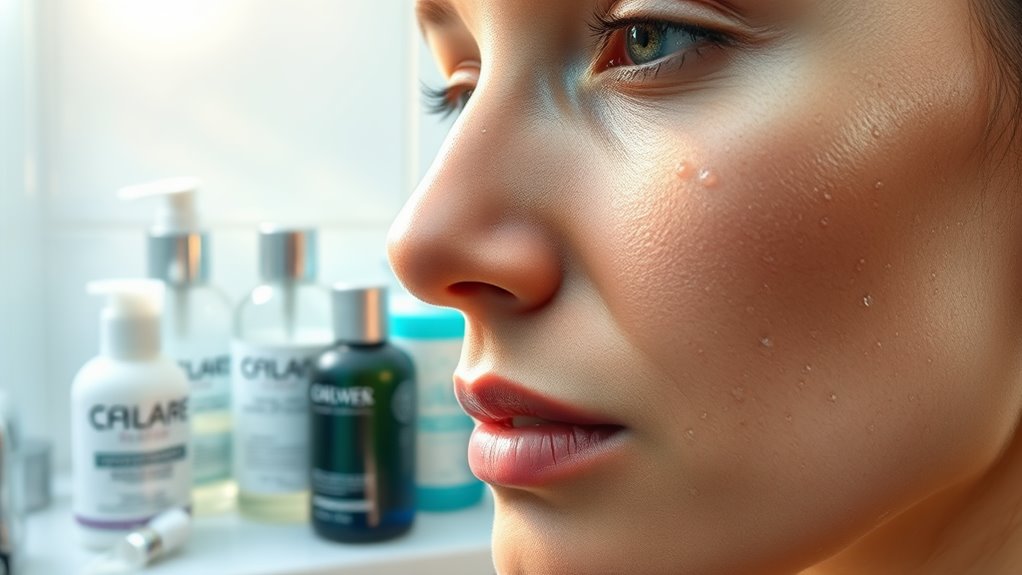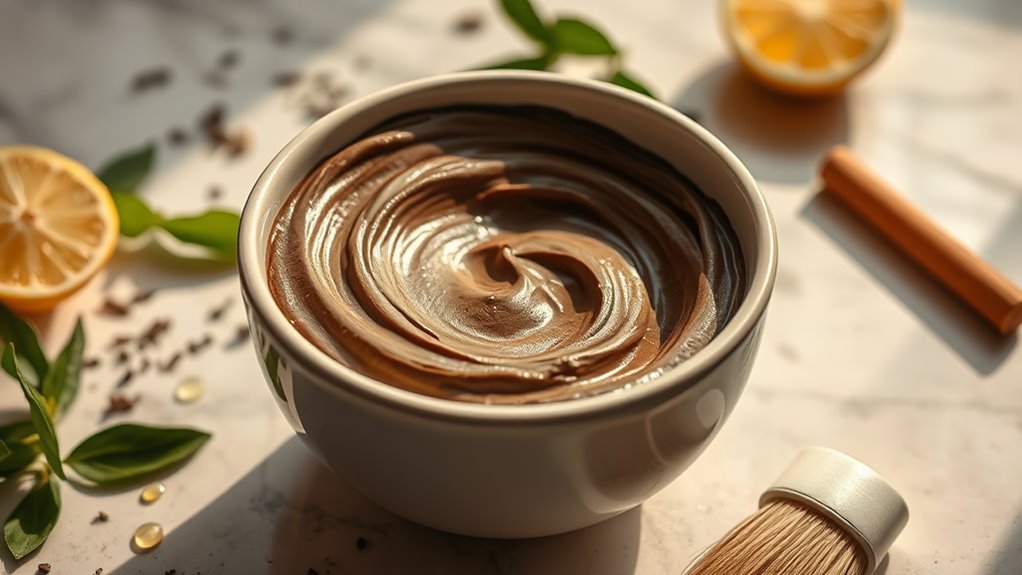How to Balance Oily Skin Without Overdrying It
If you have oily skin, finding the right balance can feel like a constant battle. You want to control shine and breakouts without stripping your skin of essential moisture. It’s all about selecting the right products and routines. From cleansers to moisturizers, each choice matters. Curious about the best strategies to achieve that perfect equilibrium? Let’s explore some effective methods that can make a significant difference.
Key Takeaways
- Use a gentle, foaming cleanser with salicylic acid or tea tree oil to control sebum without irritating your skin.
- Exfoliate with chemical exfoliants like AHAs and BHAs 1-2 times a week to remove dead skin cells and prevent clogged pores.
- Choose lightweight, oil-free moisturizers containing humectants like hyaluronic acid to maintain hydration without adding excess oil.
- Incorporate a broad-spectrum SPF using gel-based or matte-finish sunscreens to protect your skin without leaving it greasy.
- Monitor your skin’s response and adjust your cleansing routine to avoid over-drying; cleanse twice daily or reduce to once if needed.
Balancing Oily Skin Effectively
Have you ever wondered why your skin feels greasy even after washing it? Oily skin can be frustrating, but understanding how to balance oily skin without overdrying is essential. When you strip your skin of its natural oils, it can overcompensate by producing even more oil. The key is to find that sweet spot where your skin feels clean and balanced, not tight or shiny.
Start by choosing a gentle, foaming cleanser that’s specifically formulated for oily skin. Look for ingredients like salicylic acid or tea tree oil, which help to control excess sebum without causing irritation. Cleansing twice a day is often beneficial, but listen to your skin; if it feels too dry, reduce to once a day.
Next, consider incorporating exfoliation into your routine. Chemical exfoliants like AHAs and BHAs can effectively remove dead skin cells, preventing clogged pores and breakouts. However, limit this to 1-2 times a week to avoid over-exfoliating, which can lead to increased oil production.
Moisturizing is another important step. It may seem counterintuitive, but oily skin still needs hydration. Opt for lightweight, oil-free moisturizers that contain humectants like hyaluronic acid. This helps your skin retain moisture without adding more oil.
Lastly, don’t forget about sun protection. Using a broad-spectrum SPF is essential, even for oily skin types. Look for gel-based or matte-finish sunscreens to prevent that greasy feeling. Incorporating salicylic acid into your skincare routine can significantly help in managing oily skin concerns.





